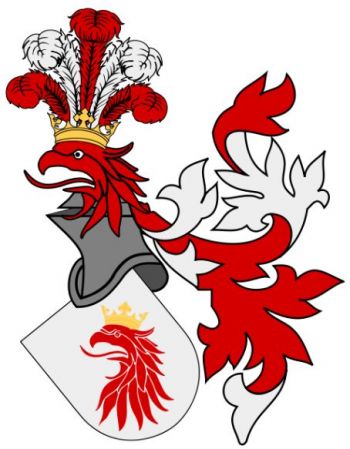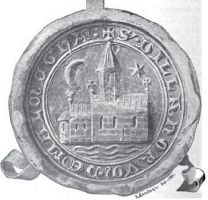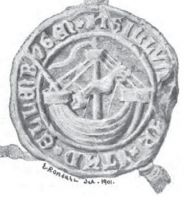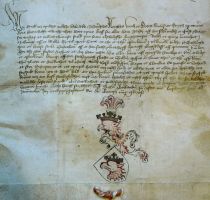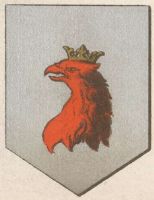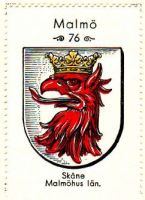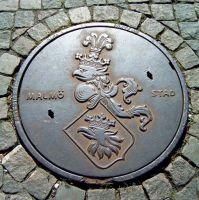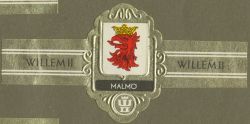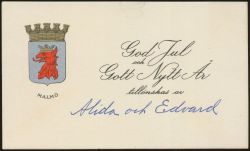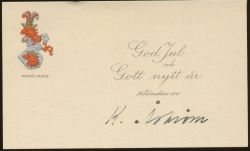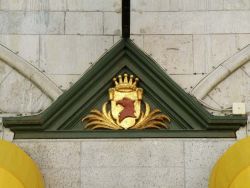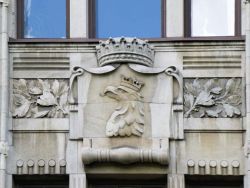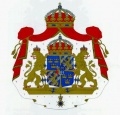Malmö
|
Country: Sweden Province (Landskap): Skåne County (Län): Skåne län (until 1997 Malmöhus län) Additions: (to see click on expand)
|
| Swedish | I silverfält ett rött, med gyllene krona krönt griphuvud. På hjälmen samma bild samt i kronan ett knippe strutsfjädrar av silver. |
| English | blazon wanted |
Origin/meaning
The arms were officially granted on April 23, 1437 by the Danish King Eric of Pommerania and again in 1974.
The oldest seal of Malmö is known from 1421 but is likely to be (much) older. It shows a church with a star and crescent (symbols for eternity) and on the base some waves (for the sea). The church probably represents the main church at the time. A second seal of the city probably dates from the 13th century, but is only known from 1417. It shows a cog ship, indicating the importance of trading.
The seal with the ship also shows the oldest name of the city, "Sigillum der stad Ellenbogen", whereas the other seal states "S(igillum) Villanorum de Malmøghæ", indicating that the seal with the ship is the oldest seal of the city. Both seals have been used by the city for several centuries.
The arms with the griffin;s head are taken from the arms of Pommerania (Pommern) which also show a griffin. It indicated the importance of the city and loyalty to the King. Ever since the city has used the arms, which is one of the very few in Scandinavia to be allowed to use a helmet and crest.
Image gallery
The letters patent from 1437 (source)
The arms in the Kaffe Hag album +/- 1935
The arms on a Dutch Willem II cigar band
The arms in the town (source)
The arms in the town (source)
Literature: Nevéus and de Waern, 1992; main image from Wikipedia Commons
Sweden heraldry portal
This page is part of the Sweden heraldry portal |
Heraldry of the World |
|
Civic heraldry:
|
Other heraldry: |
Contact and Support
Partners:
Your logo here ?
Contact us
© 1995-2025, Heraldry of the World, Ralf Hartemink 
Index of the site
